Gage DeZoort
Princeton University
High Pileup Particle Tracking with Object Condensation
Dec 06, 2023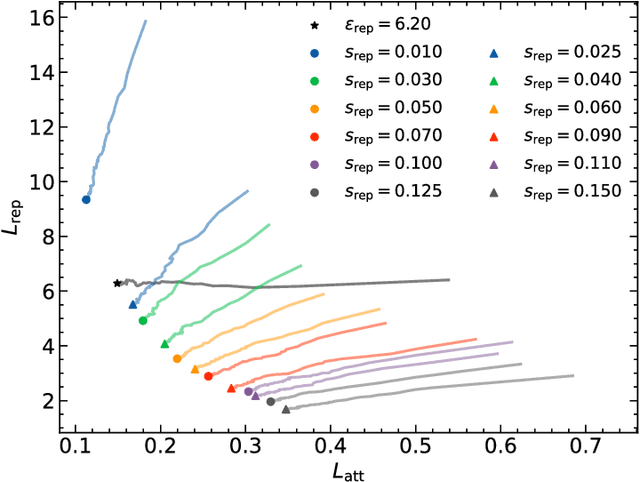
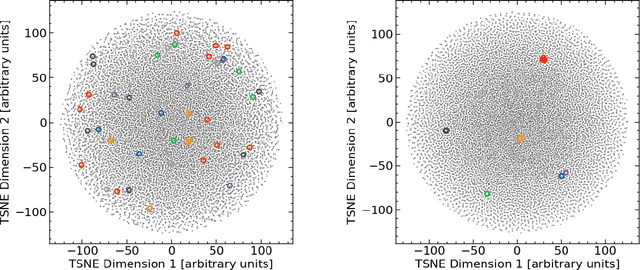
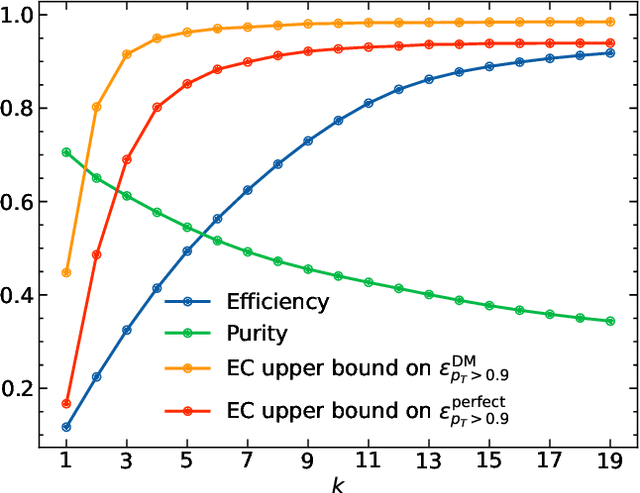
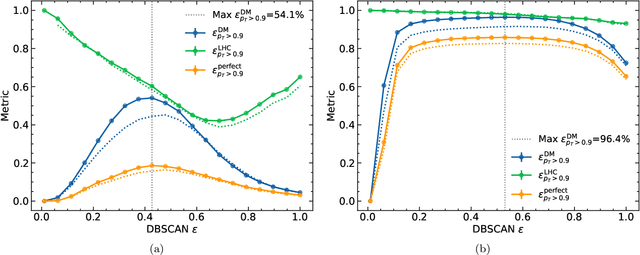
Abstract:Recent work has demonstrated that graph neural networks (GNNs) can match the performance of traditional algorithms for charged particle tracking while improving scalability to meet the computing challenges posed by the HL-LHC. Most GNN tracking algorithms are based on edge classification and identify tracks as connected components from an initial graph containing spurious connections. In this talk, we consider an alternative based on object condensation (OC), a multi-objective learning framework designed to cluster points (hits) belonging to an arbitrary number of objects (tracks) and regress the properties of each object. Building on our previous results, we present a streamlined model and show progress toward a one-shot OC tracking algorithm in a high-pileup environment.
Principles for Initialization and Architecture Selection in Graph Neural Networks with ReLU Activations
Jun 20, 2023Abstract:This article derives and validates three principles for initialization and architecture selection in finite width graph neural networks (GNNs) with ReLU activations. First, we theoretically derive what is essentially the unique generalization to ReLU GNNs of the well-known He-initialization. Our initialization scheme guarantees that the average scale of network outputs and gradients remains order one at initialization. Second, we prove in finite width vanilla ReLU GNNs that oversmoothing is unavoidable at large depth when using fixed aggregation operator, regardless of initialization. We then prove that using residual aggregation operators, obtained by interpolating a fixed aggregation operator with the identity, provably alleviates oversmoothing at initialization. Finally, we show that the common practice of using residual connections with a fixup-type initialization provably avoids correlation collapse in final layer features at initialization. Through ablation studies we find that using the correct initialization, residual aggregation operators, and residual connections in the forward pass significantly and reliably speeds up early training dynamics in deep ReLU GNNs on a variety of tasks.
Graph Neural Networks in Particle Physics: Implementations, Innovations, and Challenges
Mar 25, 2022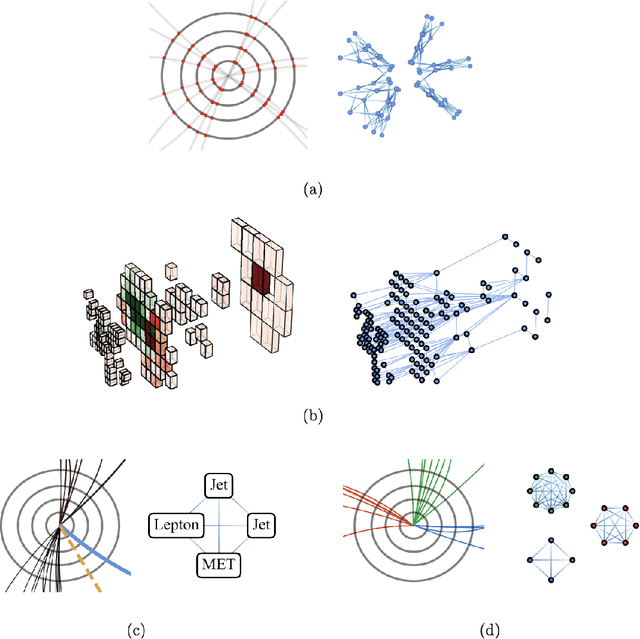
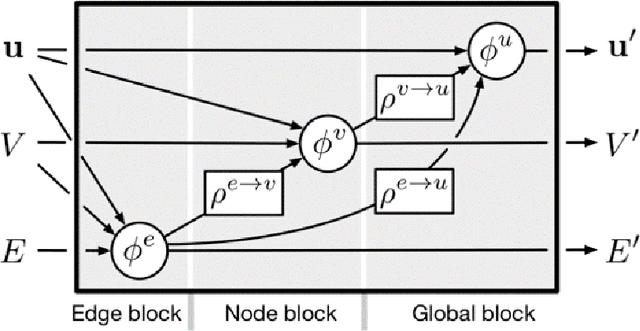
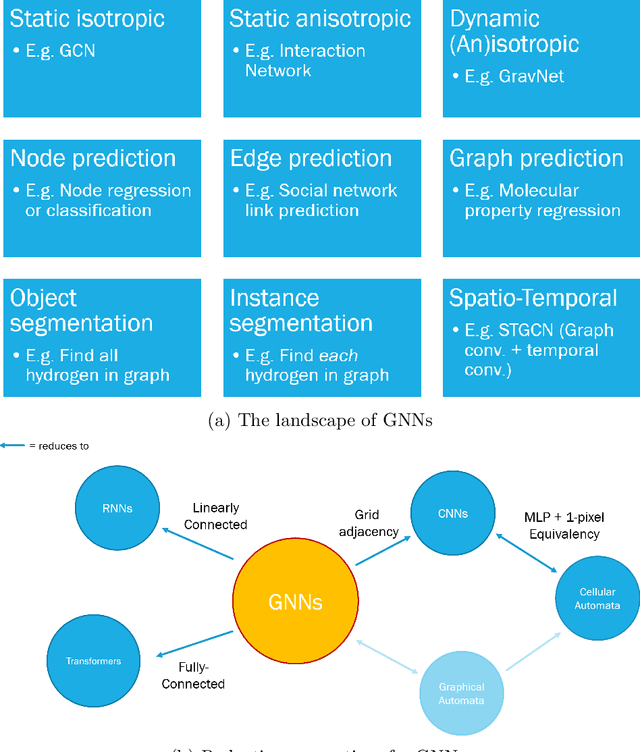
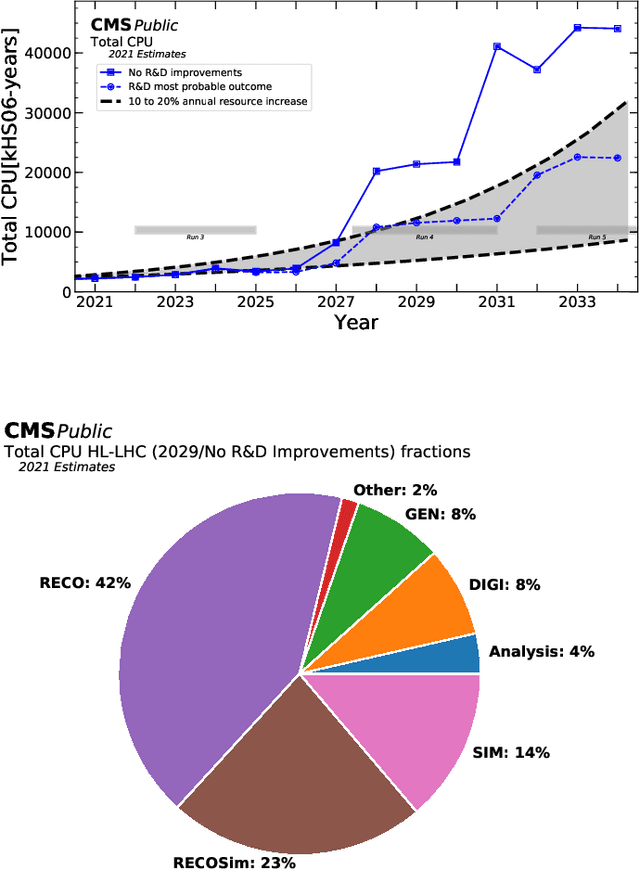
Abstract:Many physical systems can be best understood as sets of discrete data with associated relationships. Where previously these sets of data have been formulated as series or image data to match the available machine learning architectures, with the advent of graph neural networks (GNNs), these systems can be learned natively as graphs. This allows a wide variety of high- and low-level physical features to be attached to measurements and, by the same token, a wide variety of HEP tasks to be accomplished by the same GNN architectures. GNNs have found powerful use-cases in reconstruction, tagging, generation and end-to-end analysis. With the wide-spread adoption of GNNs in industry, the HEP community is well-placed to benefit from rapid improvements in GNN latency and memory usage. However, industry use-cases are not perfectly aligned with HEP and much work needs to be done to best match unique GNN capabilities to unique HEP obstacles. We present here a range of these capabilities, predictions of which are currently being well-adopted in HEP communities, and which are still immature. We hope to capture the landscape of graph techniques in machine learning as well as point out the most significant gaps that are inhibiting potentially large leaps in research.
Graph Neural Networks for Charged Particle Tracking on FPGAs
Dec 03, 2021

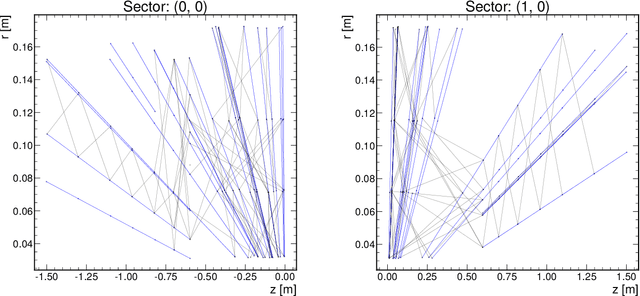
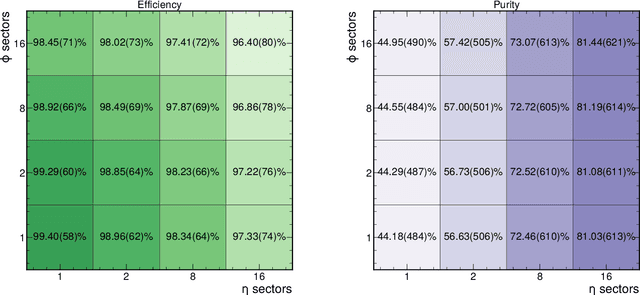
Abstract:The determination of charged particle trajectories in collisions at the CERN Large Hadron Collider (LHC) is an important but challenging problem, especially in the high interaction density conditions expected during the future high-luminosity phase of the LHC (HL-LHC). Graph neural networks (GNNs) are a type of geometric deep learning algorithm that has successfully been applied to this task by embedding tracker data as a graph -- nodes represent hits, while edges represent possible track segments -- and classifying the edges as true or fake track segments. However, their study in hardware- or software-based trigger applications has been limited due to their large computational cost. In this paper, we introduce an automated translation workflow, integrated into a broader tool called $\texttt{hls4ml}$, for converting GNNs into firmware for field-programmable gate arrays (FPGAs). We use this translation tool to implement GNNs for charged particle tracking, trained using the TrackML challenge dataset, on FPGAs with designs targeting different graph sizes, task complexites, and latency/throughput requirements. This work could enable the inclusion of charged particle tracking GNNs at the trigger level for HL-LHC experiments.
Charged particle tracking via edge-classifying interaction networks
Mar 30, 2021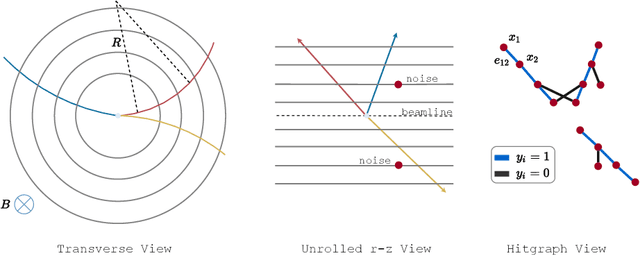


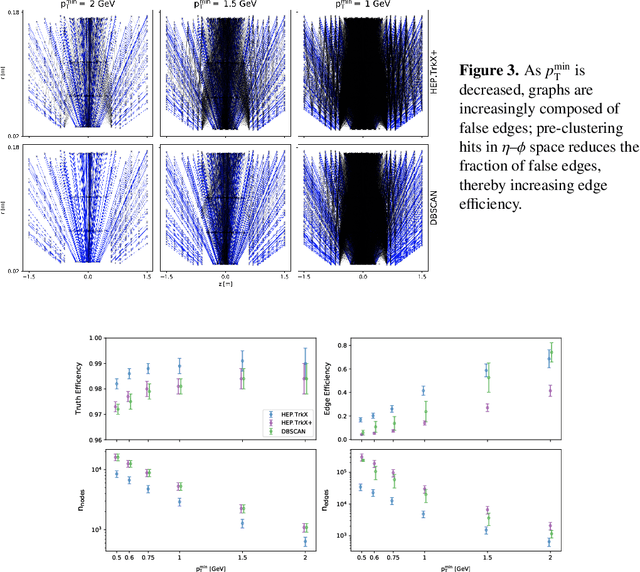
Abstract:Recent work has demonstrated that geometric deep learning methods such as graph neural networks (GNNs) are well-suited to address a variety of reconstruction problems in HEP. In particular, tracker events are naturally represented as graphs by identifying hits as nodes and track segments as edges; given a set of hypothesized edges, edge-classifying GNNs predict which correspond to real track segments. In this work, we adapt the physics-motivated interaction network (IN) GNN to the problem of charged-particle tracking in the high-pileup conditions expected at the HL-LHC. We demonstrate the IN's excellent edge-classification accuracy and tracking efficiency through a suite of measurements at each stage of GNN-based tracking: graph construction, edge classification, and track building. The proposed IN architecture is substantially smaller than previously studied GNN tracking architectures, a reduction in size critical for enabling GNN-based tracking in constrained computing environments. Furthermore, the IN is easily expressed as a set of matrix operations, making it a promising candidate for acceleration via heterogeneous computing resources.
Physics and Computing Performance of the Exa.TrkX TrackML Pipeline
Mar 11, 2021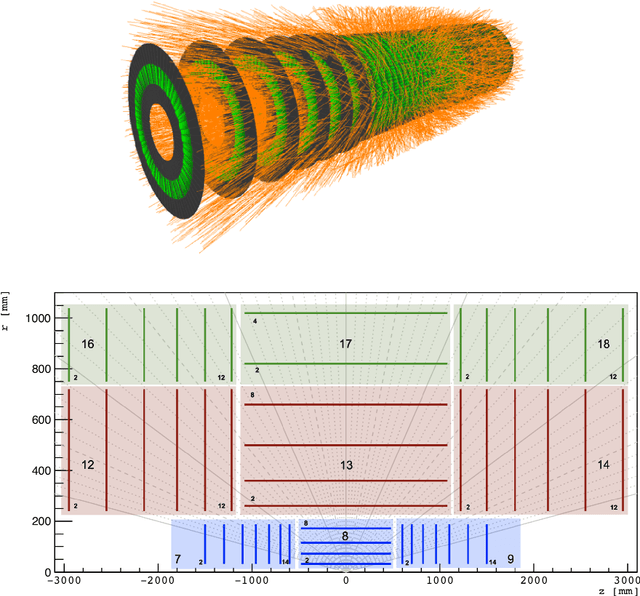
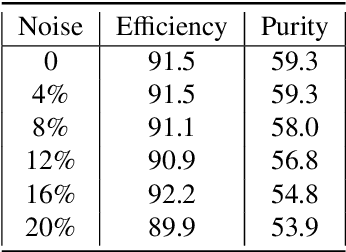
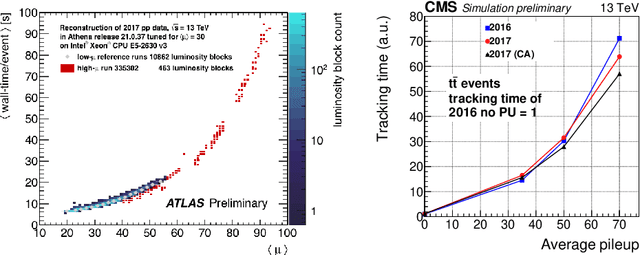
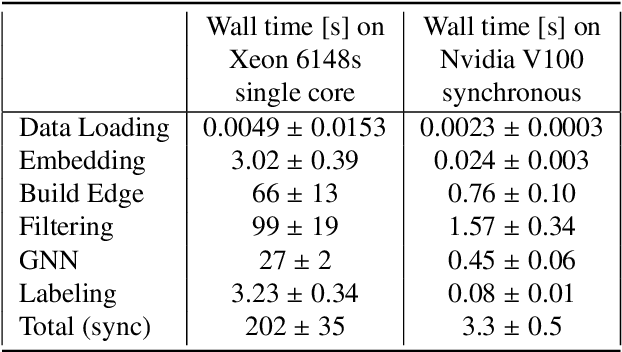
Abstract:The Exa.TrkX project has applied geometric learning concepts such as metric learning and graph neural networks to HEP particle tracking. The Exa.TrkX tracking pipeline clusters detector measurements to form track candidates and filters them. The pipeline, originally developed using the TrackML dataset (a simulation of an LHC-like tracking detector), has been demonstrated on various detectors, including the DUNE LArTPC and the CMS High-Granularity Calorimeter. This paper documents new developments needed to study the physics and computing performance of the Exa.TrkX pipeline on the full TrackML dataset, a first step towards validating the pipeline using ATLAS and CMS data. The pipeline achieves tracking efficiency and purity similar to production tracking algorithms. Crucially for future HEP applications, the pipeline benefits significantly from GPU acceleration, and its computational requirements scale close to linearly with the number of particles in the event.
Instance Segmentation GNNs for One-Shot Conformal Tracking at the LHC
Mar 11, 2021
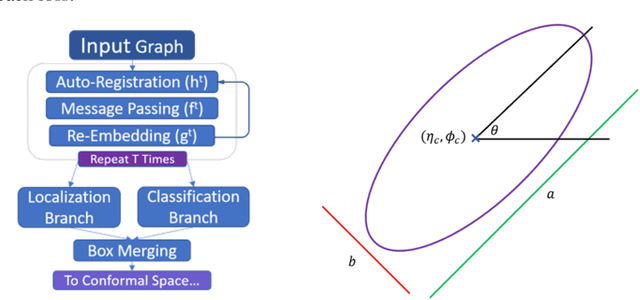

Abstract:3D instance segmentation remains a challenging problem in computer vision. Particle tracking at colliders like the LHC can be conceptualized as an instance segmentation task: beginning from a point cloud of hits in a particle detector, an algorithm must identify which hits belong to individual particle trajectories and extract track properties. Graph Neural Networks (GNNs) have shown promising performance on standard instance segmentation tasks. In this work we demonstrate the applicability of instance segmentation GNN architectures to particle tracking; moreover, we re-imagine the traditional Cartesian space approach to track-finding and instead work in a conformal geometry that allows the GNN to identify tracks and extract parameters in a single shot.
Accelerated Charged Particle Tracking with Graph Neural Networks on FPGAs
Nov 30, 2020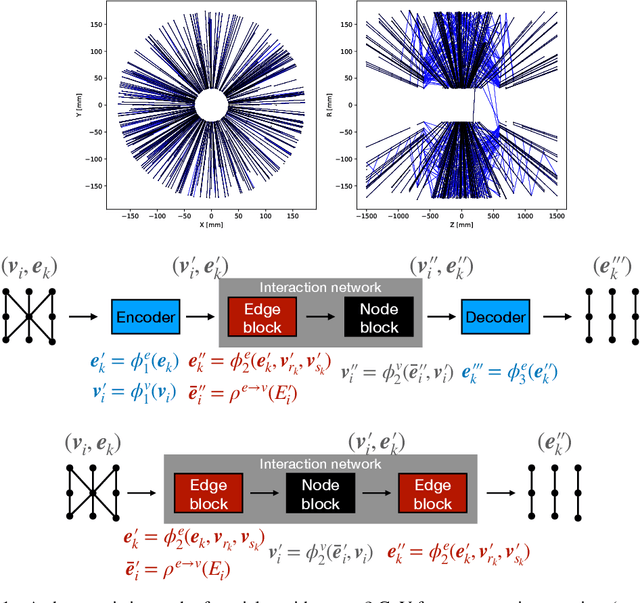



Abstract:We develop and study FPGA implementations of algorithms for charged particle tracking based on graph neural networks. The two complementary FPGA designs are based on OpenCL, a framework for writing programs that execute across heterogeneous platforms, and hls4ml, a high-level-synthesis-based compiler for neural network to firmware conversion. We evaluate and compare the resource usage, latency, and tracking performance of our implementations based on a benchmark dataset. We find a considerable speedup over CPU-based execution is possible, potentially enabling such algorithms to be used effectively in future computing workflows and the FPGA-based Level-1 trigger at the CERN Large Hadron Collider.
 Add to Chrome
Add to Chrome Add to Firefox
Add to Firefox Add to Edge
Add to Edge